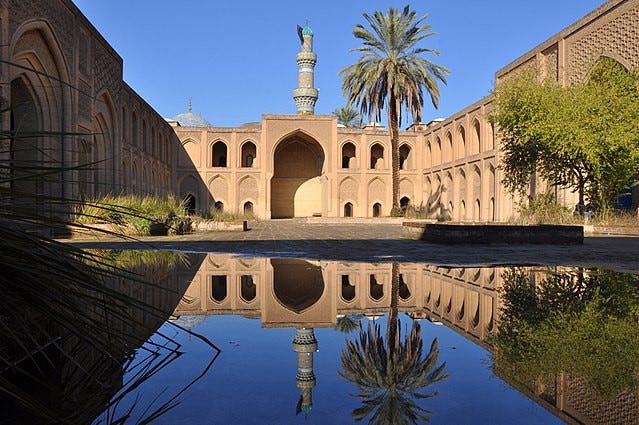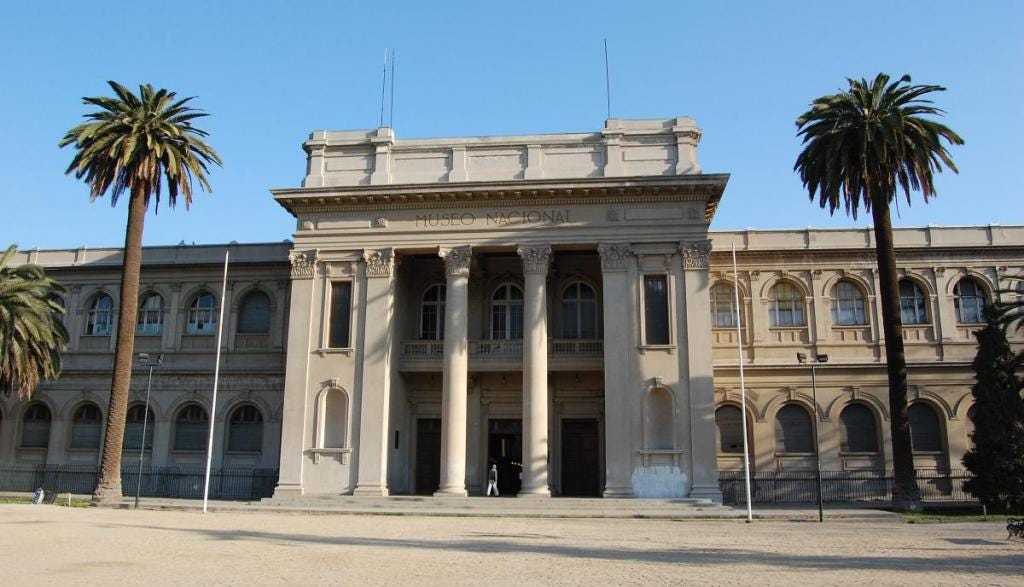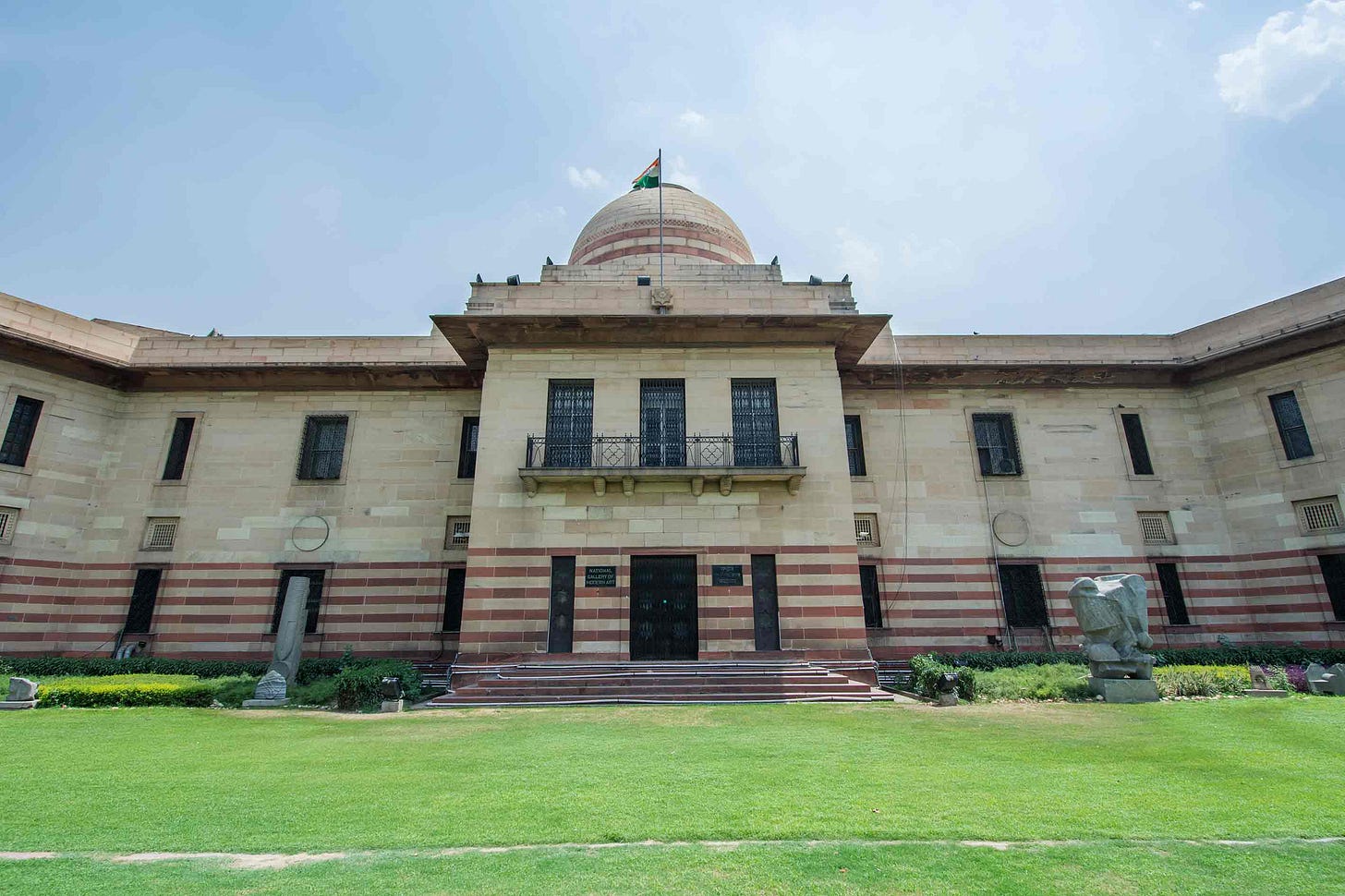I have a special relationship with museums because they help me maintain a sense of wonder for the world. There are some reasons that I developed this love affair with museums. Here is one such memory…
Museum Memories
My favourite museum memory was made in December 2019. I was visiting family in New York for a couple of weeks. They were busy in the mornings and I had lots of time on hand. I made a list of all the museums in the city. I was still on a budget and realized that the entrance fees to most museums were quite high. But there was a slight workaround. Each museum had a free day. This was a particular day in the month where visitors did not have to pay the entrance or admittance fees. The fees for all visitors on that day was covered by a large or business or corporate entity. It was usually a weekday. I made a list of all the free days of the museums in the city and decided to visit as many of them as possible on my short visit to the city. I still had to pay the admittance fees for some museums but it was really the best week of my life in more ways than one. I got to visit the following museums during that week:
Metropolitan Museum of Art
Museum of Modern Art
Tenenment Museum
Brooklyn Museum
Museum of Moving Image
National Museum of the American Arts
Morgan Library and Museum
New York Transit Museum
Rubin Museum of Art
American Museum of Natural History
Each museum in this city had something special to offer. There were so many historical, scientific, anthropological, political, cultural, psychological, sociological stories to uncover in these halls.
This trip helped me build a lifelong fascination with museums. They house a diverse range of objects that reflect human history, culture, science, and the natural world. These include artifacts such as tools, clothing, and pottery from ancient civilizations; artworks like paintings, sculptures, and photographs; natural history specimens including fossils, minerals, and taxidermy animals; scientific instruments and technological devices that showcase innovation over time; archival materials such as manuscripts, maps, and rare books; and ethnographic objects that represent the traditions and practices of various cultures. Each object type serves to educate, inspire, and preserve collective knowledge and heritage.
Museums were built to record and preserve the best of human civilization in all its messy and nuanced glory.
I had to uncover more and started walking down this rabbit hole with a set of guiding questions
What was the history of museums? Where did they emerge from? What did museums look like in ancient civilizations? What do museums look like in modern times? When did private museums become public museums? How did historical and political events affect the creation of museums? How have people interacted with these museums over time? How do museums use technology to engage with audiences around the world? Who funded these museums? Who continues to fund these museums? Why do museums matter in the digital age? Why do museums matter to me?
Museums have a rich and complex history that spans cultures, continents, and centuries. Here’s an overview of the global history of museums:
Ancient Collections (Before 500 BCE)
Early museums were primarily private collections of objects held by rulers, priests, or scholars for religious, cultural, or educational purposes. Examples include Mesopotamia: The temple complexes of ancient Sumer (circa 5300–2000 BCE) stored religious artifacts; Egypt: Pharaohs collected objects for tombs to accompany them into the afterlife; China: Imperial collections during the Shang dynasty (1600–1046 BCE) showcased art and ceremonial objects.
Classical Antiquity (500 BCE–500 CE)
In Greece temples housed votive offerings, sculptures, and precious items. For example, the Parthenon in Athens preserved cultural treasures. In Rome wealthy citizens created private collections of Greek art, sculptures, and relics, often displayed in villas or public spaces like temples.
Medieval Period (500–1400 CE)
Many collections were housed in churches, monasteries, and royal treasuries. These primarily focused on religious relics, manuscripts, and artifacts of Christian heritage. In the Eastern Roman Empire, imperial collections of religious icons. In the Islamic World libraries and centers of learning like the House of Wisdom in Baghdad preserved knowledge and objects. In Europe church treasuries stored relics like the Crown of Thorns or the bones of saints.
The Renaissance and Birth of Modern Museums (1400–1700)
The Renaissance saw a revival of interest in classical art and culture. Wealthy patrons like the Medici family in Florence began amassing collections of art and artifacts. Cabinets of Curiosity (Kunstkammer) or private collections became popular among European elites, displaying a mix of natural history, art, and antiquities. The First Public Museums were established around the world which included:
The Vatican Museum in Vatican City was founded in 1506 by Pope Julius II began displaying ancient sculptures like the Laocoön Group.
The Ashmolean Museum in Oxford, U.K. was founded in 1683 was the first university museum in the world, showcasing scientific specimens and art.
The Enlightenment Era and Expansion (1700–1800s)
Enlightenment ideas emphasized education, science, and public access to knowledge. Museums were founded to educate the public and foster intellectual inquiry like
The British Museum in London, U.K. was founded in 1753 and was established with Sir Hans Sloane’s collection of over 71,000 objects.
The Louvre Museum in Paris, France was founded in 1793 and it opened during the French Revolution, transforming the former royal collection into a public institution. European empires acquired vast collections from colonies, including art, artifacts, and natural history specimens and brought these back to their top museums.
Nationalism and Public Museums (1800s)
The 19th century saw museums as tools of nation-building, promoting cultural identity and pride. Museums of natural history, art, and archaeology proliferated in Europe, the U.S., and Asia. These included:
The Indian Museum in Kolkata, India is the oldest museum in Asia. It was established and founded in 1814 by the Asiatic Society of Bengal.
The Iziko South African Museum in Capetown, South Africa was founded in 1825. This museum is one of the oldest museums in sub-Saharan Africa. It has a large collection of scientific specimens, including fossils, ancient insects, historical tools, and traditional clothes.
The Chilean National Museum of Natural History in Santiago, Chile was founded in 1830 by French naturalist Claudio Gay, this museum was originally focused on Chile’s biology, geography, crops, and mineral resources.
The Smithsonian Institution in Washington D.C., USA was founded in 1846. Today, the Smithsonian Institution has historical holdings of over 157 million items, 21 museums, 21 libraries, 14 education and research centers, a zoo, and historical and architectural landmarks, mostly located in Washington, D.C.
World’s fairs and exhibitions (e.g., the Great Exhibition in London, 1851) spurred the development of museum collections related to technology and industry.
Modern and Inclusive Museums (1900s)
Museums began focusing on broader audiences, emphasizing education and interactive experiences. Topics expanded to include contemporary art, ethnography, and science. Due to decolonization questions arose about the provenance of artifacts, leading to debates about restitution and repatriation of cultural heritage.
The Museum of Modern Art (MoMA) in New York, USA was founded in 1929. It focused on contemporary and modern art. Their evolving collection contains almost 200000 works of modern and contemporary art.
The National Gallery of Modern Art (NGMA) in Delhi, India was founded in 1954. The main museum at Jaipur House in New Delhi was established on 29 March 1954 by the Government of India, with subsequent branches at Mumbai and Bangalore. Its collection includes more than 17,000 works by 2000 plus artists.
Digitization, Participatory Culture and Sustainability (2000s)
Since the 2000s, museums have undergone significant transformation in response to technological, cultural, and social shifts. Digitization has played a key role, with many institutions creating online collections, virtual tours, and interactive exhibits to broaden access and engagement beyond physical walls.
The rise of participatory culture has pushed museums to become more inclusive and community-oriented, encouraging visitor interaction, co-curation, and the integration of diverse narratives, particularly those of historically marginalized groups. Educational programming has expanded to include interdisciplinary workshops, STEAM focused initiatives, and immersive experiences leveraging AR, VR, and AI.
Museums have also embraced sustainability, both in exhibition design and institutional practices, and have increasingly tackled contemporary issues such as climate change, social justice, and identity. These shifts mark a move from museums as passive repositories of objects to dynamic, accessible spaces of dialogue, learning, and innovation in the 21st century.
Who pays for these museums?
Based on analysing the above information I can share some answers and observations to this question. Early Funding for museums came from wealthy patrons, royals, and religious institutions often funded early museums. Modern Funding came through government support, private donations, endowments, and ticket sales fund museums today. Corporate sponsorships and crowdfunding have become common in the 21st century.
Why do museums still matter in the digital age?
Museums today continue to evolve, reflecting cultural diversity, technological innovation, and the need to address historical injustices through transparent practices and global collaboration. Here are five reasons they still matter in the digital age:
Authentic, Tangible Encounters with History and Culture
Despite the rise of digital experiences, museums offer irreplaceable encounters with original artifacts, artworks, and specimens. Seeing a historical object or masterpiece in person creates a sense of awe, presence, and connection that digital representations can rarely replicate, reinforcing the value of authenticity in a world of virtual simulations.Trusted Spaces for Lifelong Learning and Public Education
Museums serve as informal learning environments that foster curiosity, critical thinking, and interdisciplinary exploration for all age groups. They offer curated, research-based content in engaging formats through exhibitions, talks, and workshops that combat misinformation and support civic literacy in an era of overwhelming digital noise.Guardians of Cultural Heritage and Collective Memory
Museums preserve and interpret the tangible and intangible heritage of societies, acting as custodians of memory across generations. In a fast-paced digital world where trends and content disappear quickly, museums maintain long-term stewardship of artifacts, ensuring continuity, identity, and a deeper understanding of human history.Inclusive Platforms for Dialogue and Representation
Modern museums are evolving into spaces for social reflection and community engagement, amplifying diverse voices and addressing contemporary issues like racial justice, climate change, and indigenous rights. They provide a forum for dialogue that complements and sometimes challenges the dominant narratives presented online.Bridges Between Physical and Digital Worlds
Far from being obsolete, museums now blend physical and digital experiences through innovations like virtual exhibits, 3D scans, interactive apps, and online archives. This hybrid model expands access, fosters global collaboration, and allows museums to reach wider audiences while enhancing in-person visits with rich digital layers.
To conclude this essay, I made a list of the most visited museums around the world today and added a link to their digital collections for you to explore further.
Museums around the World + Digital Collection Link
The Louvre – Paris, France
The world's most visited museum, renowned for masterpieces like the Mona Lisa and Venus de Milo.
Website: www.louvre.frThe Metropolitan Museum of Art (The Met) – New York City, USA
One of the largest art museums globally, featuring over 2 million works spanning 5,000 years.
Website: www.metmuseum.orgThe Vatican Museums – Vatican City
Home to the Sistine Chapel and an extensive collection of Renaissance art.
Website: www.museivaticani.vaThe British Museum – London, UK
Famous for artifacts like the Rosetta Stone and the Elgin Marbles.
Website: www.britishmuseum.orgThe National Gallery – London, UK
Houses a rich collection of Western European paintings from the 13th to the 19th centuries.
Website: www.nationalgallery.org.ukThe Tate Modern – London, UK
Britain's national museum of modern and contemporary art.
Website: www.tate.org.uk/visit/tate-modernThe National Museum of China – Beijing, China
Showcases China's history and art, from ancient times to the modern era.
Website: en.chnmuseum.cnThe American Museum of Natural History – New York City, USA
Known for its dinosaur fossils and the Hayden Planetarium.
Website: www.amnh.orgThe National Gallery of Art – Washington, D.C., USA
Features a vast collection of European and American art.
Website: www.nga.govThe Musée d'Orsay – Paris, France
Houses the world's largest collection of impressionist and post-impressionist masterpieces.
Website: www.musee-orsay.fr
If you are still curious you can explore this list of the top 100 museums in the world from The Art Newspaper titled, The 100 most popular art museums in the world (2023) that was published by Lee Cheshire and José da Silva and with research by Lillie Ellen Moller and Robert Palk.
I would also highly recommend exploring Google Arts and Culture that puts the treasures, stories and knowledge of over 2,000 cultural institutions from 80 countries at your fingertips.
Finally the best way to develop a relationship with museums is to visit a museum that is closest to your home in your corner of the world.
Museums matter to me even today because:
In a fast changing digital world they help me maintain a sense of wonder for all that came before me.
If you enjoyed reading this you may also enjoy reading this essay on why humans create art?
Why Humans Create Art?
I have been thinking about my relationship with Art a lot. I am sure other humans do the same. It is a funny word right?
Until next time,
Keep Learning.
Abhishek Shetty












As a museum lover, I enjoyed this! Thanks for all the time and thought you put into it! If you haven't read it yet, you might enjoy "Why the Museum Matters" by Daniel Weiss, a former CEO of the Met. I did my internship at the Met so I'll admit I do have an extra fascination about anything related to it.